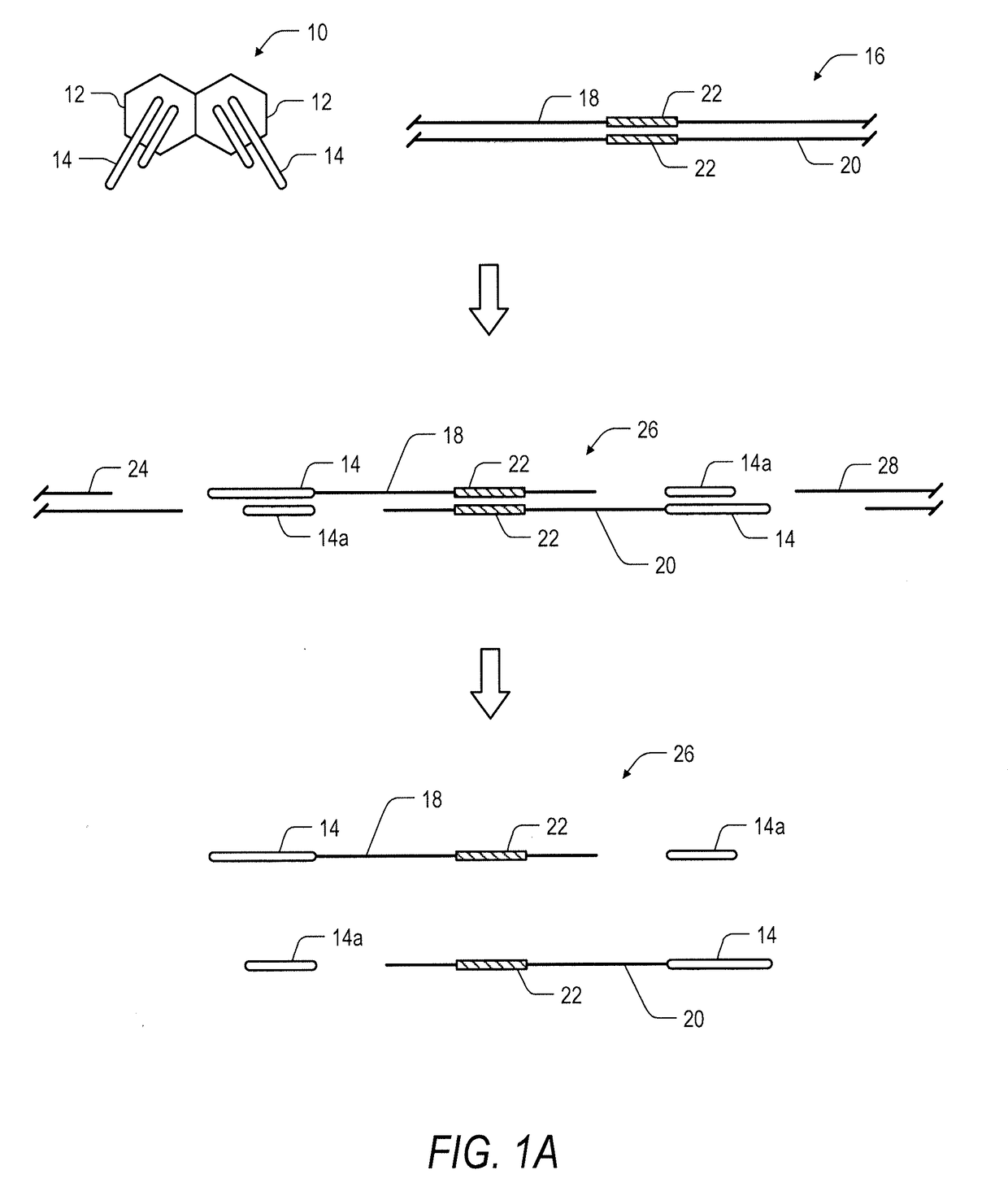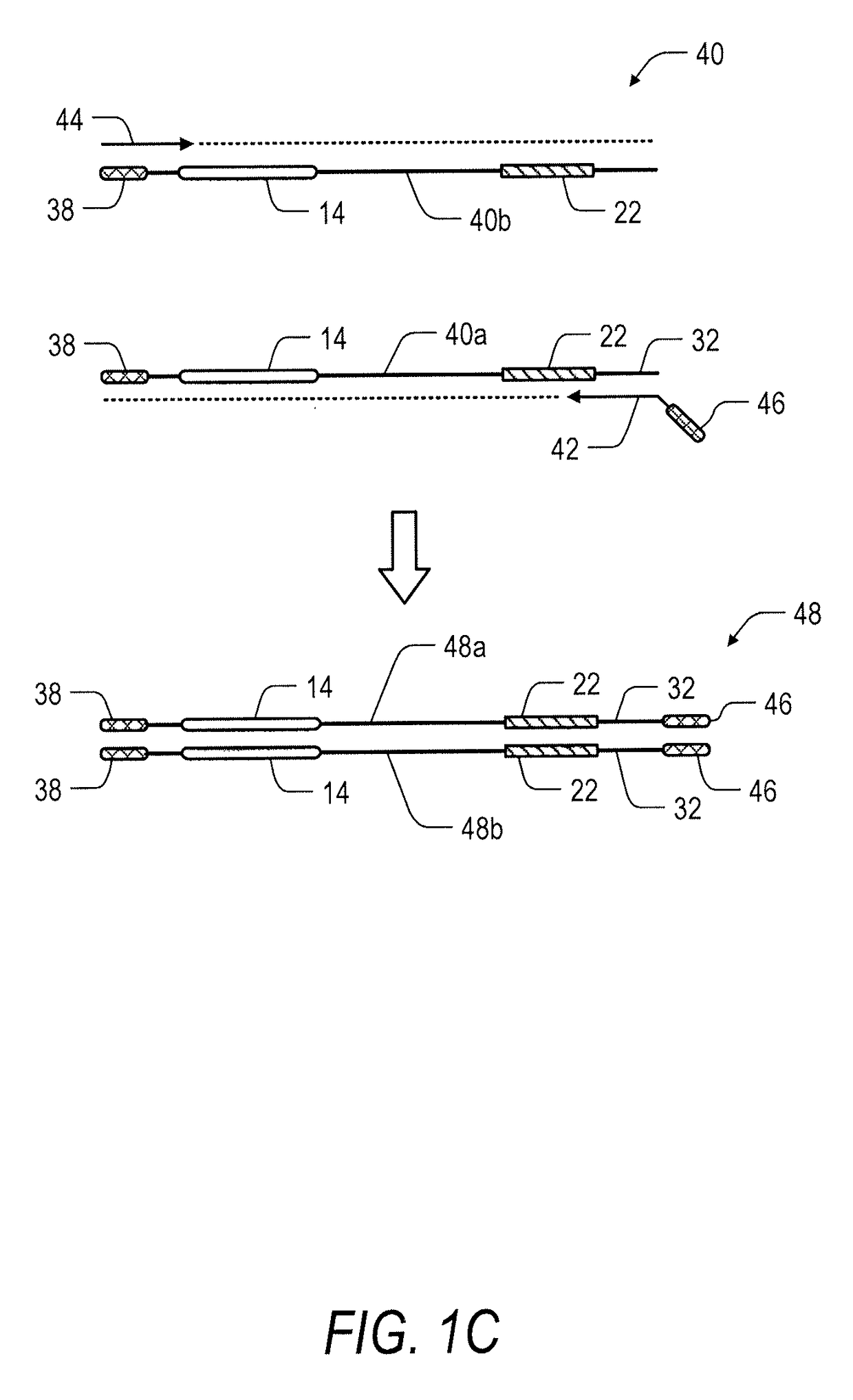System and method for transposase-mediated amplicon sequencing
a technology of amplicon and transposase, applied in the field of targeted enrichment of nucleic acids, can solve the problems of laborious workflow, large starting material input requirements, and high cost of sequencing entire genomes
- Summary
- Abstract
- Description
- Claims
- Application Information
AI Technical Summary
Benefits of technology
Problems solved by technology
Method used
Image
Examples
example 1
[0066]Libraries were prepared from 50 ng Coriell DNA (NA12878) with a mix of 3 target specific primers. These libraries were sequenced to verify enrichment for targets of interest versus, for example, off-target amplification.
[0067]Target specific primers were used to amplify 1 ng of the final library to check that enrichment for the region of interest had taken place by qPCR and end-point PCR. Results from qPCR and Bioanalyzer traces are shown in FIG. 4 and FIGS. 5-6, respectively.
[0068]As shown in FIG. 4, real-time amplification using primers specific to region of interest shows approximately 1000-fold enrichment for region of interest in the modified TnPrep library of the present disclosure as compared to the standard TnPrep library. The standard TnPrep library is a library prepared with the standard transposase loaded with R1 and R2 arms and amplified with the standard NEXTERA i5 and i7 primers, as opposed to the modified TnPrep library which is prepared with a transposase loade...
example 2
[0084]The effects of the concentration of transposase complex on the final insert size distribution, as well as metrics including on-target rate, were investigated by incubating 50 ng of human genomic DNA (Coriell, NA24385) with increasing quantities of transposase complex. Specifically, 50 ng of human genomic DNA (Coriell, NA24385) were incubated with one of a high concentration (36 μg / mL), an intermediate concentration (9 μg / mL), or a low concentration (1.125 μg / mL) of transposase complex. The highest concentration of transposase complex resulted in a greater abundance of shorter nucleic acid fragments (having an average fragment size of 550 nucleotides), whereas the lowest concentration of transposase complex resulted in larger nucleic acid fragments (having an average fragment size of 614 nucleotides). The intermediate concentration of transposase complex resulted in an average fragment size of 580 nucleotides. Moreover, nucleic acid libraries prepared with three different trans...
example 3
[0085]Turning to FIGS. 10A and 10B, the impact of lowering the DNA input into the TnPrep workflow was investigated using the Quantitative Multiplex Reference Standard (HORIZON DISCOVERY HD701). Similar on-target rates were observed with decreasing DNA input from 50 ng to 1 ng, with all on-target rates calculated to be greater than 90% (in accordance with FIG. 10A, the high level of DNA input corresponds to 50 ng, the intermediate level of DNA input corresponds to 10 ng and the low level of DNA input corresponds to 1 ng). Notably, coverage uniformity was unaffected by decreasing DNA input. As shown in Table 7, the percentage of bases covered at a depth of at least 0.2× of the mean was greater than 94% for each of the tested DNA input amounts.
TABLE 7DNA input (ng)Bases covered at ≧0.2x of mean (%)5094.21096.1194.9
PUM
| Property | Measurement | Unit |
|---|---|---|
| concentrations | aaaaa | aaaaa |
| concentrations | aaaaa | aaaaa |
| concentration | aaaaa | aaaaa |
Abstract
Description
Claims
Application Information
 Login to View More
Login to View More - R&D
- Intellectual Property
- Life Sciences
- Materials
- Tech Scout
- Unparalleled Data Quality
- Higher Quality Content
- 60% Fewer Hallucinations
Browse by: Latest US Patents, China's latest patents, Technical Efficacy Thesaurus, Application Domain, Technology Topic, Popular Technical Reports.
© 2025 PatSnap. All rights reserved.Legal|Privacy policy|Modern Slavery Act Transparency Statement|Sitemap|About US| Contact US: help@patsnap.com



